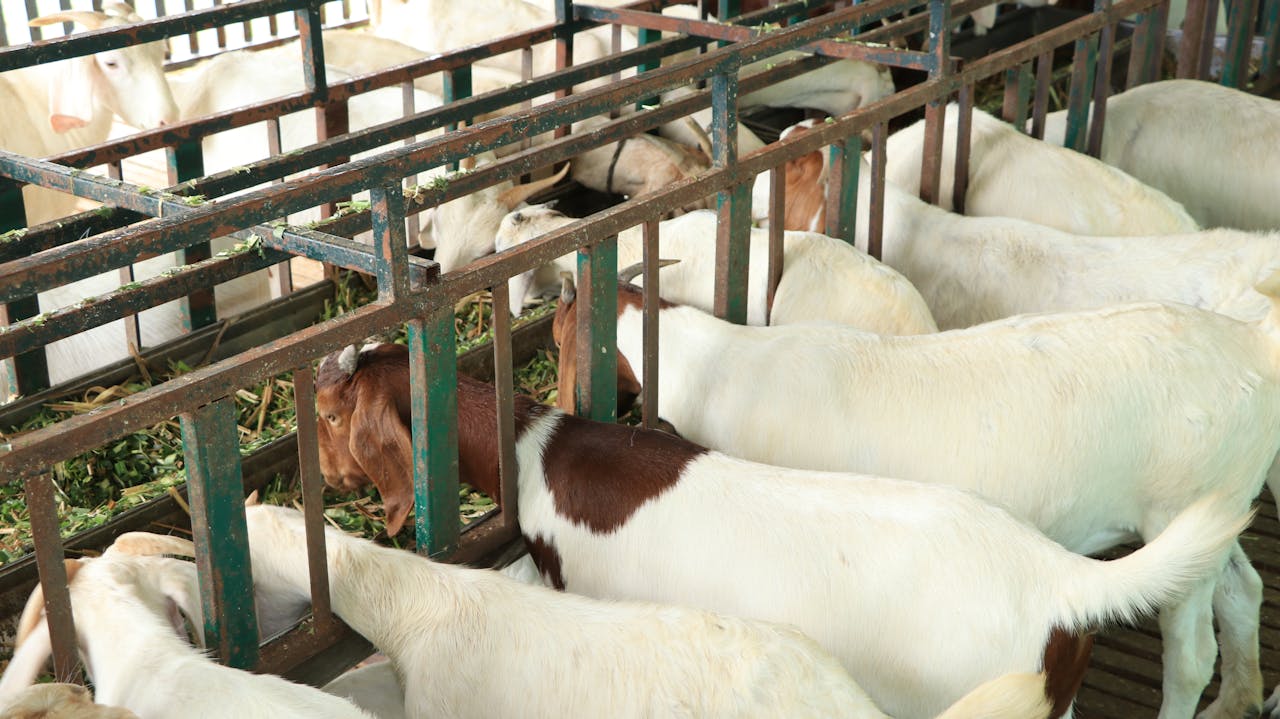Goat farming can be a rewarding venture if done correctly. Here are some key tips for beginners to ensure the health, productivity, and sustainability of your goat farm:
Understand Goat Basics
- Purpose of Farming: Decide the purpose of farming (meat, milk, fiber, or pets) as it influences the breed selection.
- Goat Behavior: Goats are social animals, so plan to have at least two or more.
- Space Requirements: Ensure you have enough space for grazing and housing.
Choose the Right Breed
- Dairy Goats: Nubian, Saanen, Alpine, Toggenburg.
- Meat Goats: Boer, Kiko, Spanish.
- Fiber Goats: Angora, Cashmere.
- Dual-Purpose: Some breeds can provide both meat and milk, like Nubian.
Research local breeds that thrive in your area’s climate and environment.
Housing
- Shelter: Provide a sturdy, ventilated, and predator-proof structure. Protect goats from rain, wind, and extreme temperatures.
- Flooring: Use raised, slatted floors to keep the shelter dry.
- Space: Allocate 15–20 square feet per adult goat in housing.
Nutrition
- Feed: Goats require a mix of hay, grains, and fresh forage. Ensure a diet with:
- Hay: A primary source of roughage.
- Concentrates: Grains like corn, oats, and barley for energy.
- Minerals: Provide a salt lick with essential minerals like selenium.
- Water: Clean, fresh water should always be available.
Health and Maintenance
- Vaccinations: Common vaccines include CDT (Clostridium perfringens types C and D, and tetanus).
- Deworming: Conduct routine deworming based on a vet’s advice. Monitor for parasite signs (diarrhea, weight loss).
- Hoof Trimming: Regular trimming every 4–6 weeks prevents hoof issues.
- Veterinary Care: Build a relationship with a local vet experienced in goats.
Breeding
- Age for Breeding: Female goats (does) can breed at 8–12 months but should reach at least 70% of their adult weight.
- Kidding: Provide a clean, quiet area for kidding. Prepare for assistance if needed.
Grazing and Pasture
- Rotational Grazing: Helps prevent overgrazing and parasite build-up.
- Fencing: Use sturdy fences; goats are excellent climbers and can escape easily.
- Forage Variety: Include grasses, shrubs, and small trees to meet their dietary needs.
Record Keeping
- Keep records of breeding, health checks, feed expenses, and milk/meat production to monitor progress and make informed decisions.
Marketing
- Develop a plan to sell your products (milk, meat, fiber). Build local networks, explore farmer’s markets, or create online presence.
10. Start Small
- Begin with a manageable number of goats (2–5) to gain experience before scaling up.
With proper planning and care, goat farming can be a sustainable and enjoyable venture.
